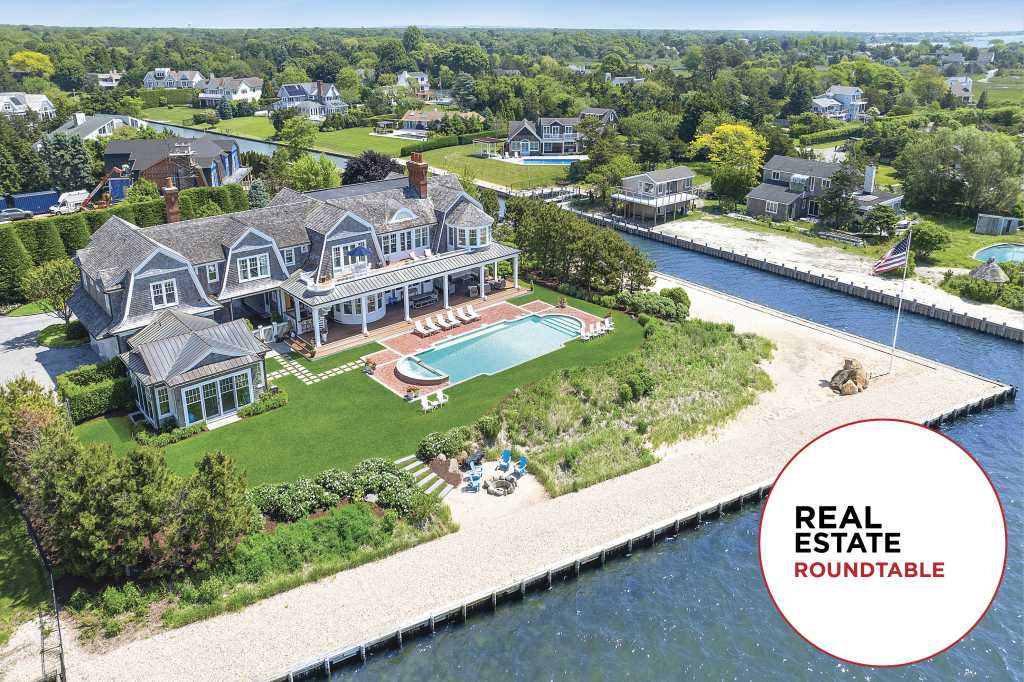The Hurricane of 1938, Part II: The Path, Arrival

This is part two of a three-part series Dan Rattiner wrote for the 80th anniversary of the devastating Hurricane of 1938 in our September 21, 2018 issue. It originally appeared as one long-form story.
Read Part I: The Barometer, a Prelude
Read Part III: The Aftermath, an Epilogue
THE PATH
The Hurricane of 1938 had begun to form about 500 miles east, off the coast of Miami. It swirled in the classic counter-clockwise pattern, and according to the telegraph of a steamship, which had inadvertently ventured into the storm, the winds were blowing at about 80 miles an hour and rising. The steamship pulled clear of the storm and the Miami Weather Bureau issued a marine alert to all ships at sea, fixing the longitude and latitude of the storm and urging all ships to stay away from the area, or not to venture out at all, if possible.
Nothing was heard further about the storm for three days. But then, a second telegraphed message came in, this time from a Panamanian freighter, which encountered the storm 170 miles from the coast of Miami. The Panamanians had swung to the west of the storm, and by steaming at a full 15 knots had slowly been able to get away from it. They estimated the hurricane was traveling due west, straight for the coast of Miami, at a speed of 12 miles an hour.
The weather bureau wasted little time. STAND BY FOR POSSIBLE HURRICANE WARNINGS was the order for the day, on Saturday, September 17. The newspapers, hitting the stands on Sunday, carried the warning front page, together with an interview of a weather bureau official who said the city might be getting as much notice as a full week, but there was really no way of telling.
Miami had had its share of hurricanes. It experienced a devastating storm, without warning, in 1926, and another storm, with warning, in 1936. The city immediately began making preparations, boarding up windows, tying everything down, bringing everything possible to high ground.
Two days passed. STAND BY FOR POSSIBLE HURRICANE WARNINGS DURING THE DAY, the weather bureau repeated on Tuesday. On Tuesday, the proclamation was HURRICANE WARNINGS WILL PROBABLY BE ISSUED TONIGHT. But none came. The skies were clear. The hours passed. There was not a trace of the storm.
At 8 a.m. on September 21, the weather observatory at Cape Hatteras, North Carolina, recorded winds of 56 miles an hour. The speed of the winds was high but not unusual, and nothing peculiar was thought of it. Within two hours the winds had subsided.
We know today, from piecing together the fragments of information available, that the Hurricane of 1938 had grown into a monster in both speed and size. From its rather normal beginnings off the coast of Miami, the hurricane swung to the north and began to pick up speed in a manner unknown either before or since. Most hurricanes travel at a predictable pace of between 10 and 13 miles an hour.
Even in the 1930s, when weather prediction was in a relatively primitive stage, it had been learned that this was the case. But this particular hurricane, its winds increasing in intensity to 100, then 120, then 140 miles an hour, began to increase its forward motion until, when it passed off the coast of Cape Hatteras, it was moving at a speed of nearly 40 miles an hour—about as fast as a good freight train—and it was quickening.
No one knew it at the time, but the cause of this phenomenon was a peculiar, and in itself unique, high pressure zone, which stretched like a broad curtain on a north-south axis up the North Atlantic Ocean, ending only in the cold air patterns of Canada. The hurricane had started on a more traditional westerly direction—toward the Miami coast—and then it had suddenly locked into this high-pressure curtain shifting its direction to the north and northeast. Up the coast it came, feeding on the high-pressure curtain, growing on it, devouring it. Up it came, as if it were sucked up in a gigantic vacuum tube, until the storm had developed a violence never before experienced along the Atlantic Coast.
The storm covered the 1,000 miles between Cape Hatteras and eastern Long Island in just over 11 hours—the eye passed over Westhampton Beach—traveling at the incredible speed of 90 miles an hour, with winds of perhaps 160 miles an hour. It slammed into the coast here at a little after four o’clock in the afternoon, and due to its great speed, passed in less than 120 minutes. But by an unbelievable coincidence, the storm slammed into the land almost precisely at high tide—a fact that worsened things a dozen-fold. The attendant tidal wave had the benefit of nearly 20 feet of additional high water. And it was a two-story, building-shattering wall of sea that literally swept parts of eastern Long Island clear, and cost the lives of more than 50 people.
Yet, from the moment the storm had last been seen, off the coast of Miami on Tuesday morning, except for the brief notation at Cape Hatteras, nobody at the weather bureau or anywhere else had any idea where the Hurricane of 1938 actually was, such was its speed. On Wednesday at noon, the residents of Miami were reading in their newspapers that the storm had very likely blown out to sea. Yet just 24 hours later, the residents of West Dover, New Hampshire, were picking up sheets of paper in the village square that turned out to be the court records from the Town of Southampton, thrown two states to the north by the violence of the storm and wafting down on the peaceful village in southern New Hampshire.

THE ARRIVAL
It was at about 2:30 in the afternoon of that Wednesday that the residents of Montauk knew a catastrophe was building. The winds were howling at over 50 miles an hour and the sky was getting darker by the minute. Out at the little fishing village on Fort Pond Bay, the normally peaceful waters of the bay had risen to a frenzy. The boats rocked angrily at their docks and masts and spars cracked as they banged and splintered against one another.
More alarmingly, the level of the bay had risen to a height never before seen in living memory. Ten feet over the high-water mark, the waves crashed at the top of the beach, and with two more hours to high tide, it was apparent that the little village would shortly be inundated by the sea. Men raced around desperately trying to tie things down. The womenfolk, at the insistence of their men, had run with their children to the railroad station some 100 yards further on high ground and, after brief discussion with the stationmaster, boarded the heavy steel passenger cars of the Long Island Rail Road at rest in
the switchyard.
THE WEATHER BUREAU IS ISSUING SEVERE GALE AND HIGH TIDE WARNINGS FOR EASTERN LONG ISLAND was the last message received over the radio in Montauk before all the power went out.
Then the sea came over the beach. In the unearthly whine of the 200-mile-an-hour fury, there was no sound of buildings moving from their foundations, of fishing boats crashing into schoolhouses. Viewed from the windows of the railroad cars, the whole scene, the destruction of the village of Montauk, had an almost slow-motion quality about it, as if a silent film were being run at half speed, slowly, deliberately, but with a certainty that no power on earth could stop.
The menfolk of the village arrived at the railroad cars and clambered aboard. There was nothing further they could do. And what was, hours before, a peaceful and picturesque village of several hundred people was now packed in wonder, inside three cars of the Long Island Rail Road, witnesses to the greatest local catastrophe of our times.
In East Hampton, at about three o’clock, the sails began to blow off the windmills, taking off like paper airplanes high into the sky. Some of these sails were found over 40 miles away, others were never recovered.
Along Main Street, the great elm trees, the pride and glory of the town, swayed in the wind and then began to fall. The last of the children from the Edwards Theatre, ushered out the front door when the power failed, crossed Main Street just 20 minutes before the stately old giants began to go. One fell in front of the Baker and Lester Hardware Store, smashing in the roof of a sedan. Another fell in front of the Gardiner House, pulling down the power lines with it and setting off a series of sparks and flashes.
Only two days before the Ladies Village Improvement Society of East Hampton had met to consider the care of these elm trees for the coming year. Receipts from the annual Village Fair had been less than the year before, and the women had to consider how to make do with fewer funds. Now the trees were going. Crashing in that strange silence one after another. Before the day would end, a total of 139 of the elms, by actual count, fell across Main Street and Woods Lane to the west. The storm increased in intensity. The wind indicator aboard the Vanderbilt yacht, rocking violently at its berth in Greenport, registered 140 miles an hour, then 150, then burst in an agony of tiny springs and gears.
It was four o’clock. The eye of the storm, racing irrevocably up the North Atlantic high-pressure tunnel, came closer and closer to the shore of the East End. And then it was high tide, a moment in time dictated by a disinterested moon, and the ocean came over the land, inflicting the greatest damage of all.
From Montauk to Fire Island, the big summer “cottages,” built along the top of the dunes, began to fall apart into sections. Some just burst into tinder, following the force of the sea, so much driftwood, toward the centers of the tiny villages inland. Amagansett was visited by window frames, shutters and storm windows. Southampton Village saw bits of front steps, garage doors and light fixtures. Westhampton Village, inundated with over six feet of seawater, downtown, hosted, among other things, a complete bathroom, including curtains, toilet paper in place, and even a rug on the floor. All of this debris seemed to stop when it reached the downtowns, three to six miles inland, for this was as far as the force of the tidal waves would carry it.
Other homes along the beach simply lifted off their foundations and floated, some of them whole, others in sections, like giant life rafts, carrying bankers and stockbrokers, maids and chauffeurs, swirling in the violence of the sea, to the safety of such landing sites as golf courses, well inland.
The section of Dune Road from Quogue to Moriches took the worst of it. At 4:15 p.m., the howling wind, moving at an incalculable speed, sent the sea roaring across the dunes a full three floors high. Virtually everything went before this onslaught. And what had been a thriving summer community of 179 “cottages” along the beach came suddenly and violently to an end.
It was the height of the storm. The spire on the magnificent Old Whalers’ Church in Sag Harbor, built nearly 100 years earlier by the whaling men to a height of 19 stories, the highest structure on the East End, lifted off intact and then fell with a silent, slow motion quality into the burying ground next to it. In Amagansett, the Amagansett Presbyterian spire went down. The Amagansett Bathing Pavilion was swept away, and to the east of town, the Barbour Restaurant and Surf Club in the fledgling development of Beach Hampton disappeared without a trace. The Metro Theater in Greenport collapsed, and the fashionable St. Andrews Dune Church in Southampton fell into ruins.
Out in Long Island Sound, the New London Ferry found itself stranded. The docks at both Orient and New London had been swept away, and the captain of the Catskill learned over the radio that there was no place to go. With eight passengers and ten autos on board, Captain Sherman headed full steam ahead through the whitecaps for New Haven. In a city of that size, SOMETHING must be available for docking.
Dozens of people hung tightly to their roofs and were blown off Dune Road, across Mecox Bay and into Westhampton Beach or Quogue. Miss Mary Broadnax, 40, the maid at the summer home of Everett Tutchings of Manhattan, was the sole resident in the Tutchings “cottage” on Dune Road. She was there, spending the week packing the family’s things, when the house came apart at the seams.
She climbed up the chimney hole and held onto the roof when the roof came off. Driven across Mecox Bay, she leaped to another roof that happened by when her roof broke up and sank, then, after getting in a bathtub, which seemed safer but wasn’t, she got on still another roof when the bathtub sank and finally came ashore in a tree, where she was later rescued.
At 4:15 p.m., at the height of the storm, the seismograph at Fordham University in Manhattan recorded earth tremors emanating from eastern Long Island. A technician observing the data indicated that an earthquake was taking place somewhere near Westhampton. But, in fact, it was later found that the instrument was just picking up the earth’s shock, the incredible reaction to surf breaking on a beach.
Read Part III, “The Aftermath, an Epilogue” on Saturday, September 22.










